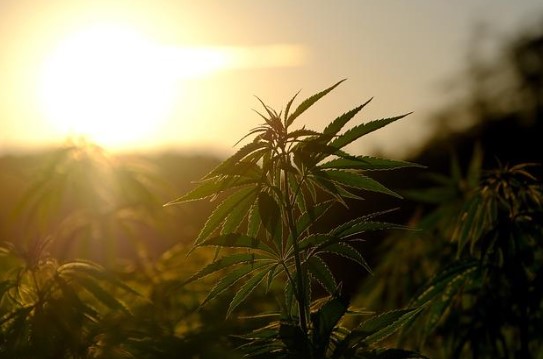Many strains of cannabis are available at present, serving different purposes. While some are very relaxing and help with sleep, others encourage sociability and creativity. The difference between cannabis strains lies in their chemical composition. The cannabis plant contains roughly 426 chemical entities; more than 60 are cannabinoid compounds. They’re responsible for the physical and psychological effects that come to pass when the leaves and flowers of the plant are consumed. Although medical cannabis is becoming more available in Europe, it remains illegal for personal use.
New cannabis strains are created to enhance specific characteristics, such as yield, potency, aromas, and taste. They’re created through a process called breeding, which involves mixing the genetic material from compatible species. Since plant breeding is highly technical, it’s realised at a commercial scale. You can’t do it yourself.
Table of Contents
The Importance and Implication of Cannabis Genetics
Cannabis genetics deals with heredity in plants, namely the mechanisms of hereditary transmission and variation in inherited characteristics. The code inscribed in the DNA dictates the properties of an individual cannabis plant, of which mention can be made of leaf shape, the ratio of terpenes, and flowering times. Thousands of cannabis varieties exist now, and breeders worldwide continue to add to the number. Diversity in genetic resources allows breeders to develop new and improved cultivars with desired characteristics. With the advent of new techniques, the process of genetic manipulation is undertaken with more precision.
Biotechnologies, such as genetic engineering, offer an opportunity to introduce new traits and achieve the full potential of this environmentally friendly and sustainable plant. Cannabis stands out as a promising tool for the medical community, but a vast amount of its biology remains unknown, so it’s necessary to broaden our knowledge. To preserve genetic diversity for the future, cannabis seeds are stored in seed banks; the collection of seeds is stored at low temperatures and low moisture. Cannabis seed banks are considered seed libraries, as they contain valuable information about stratagems to help plants cope with change.
Cannabis Plants Can Be Either Male or Female
Cannabis is a dioecious plant, meaning it produces pollen and ovules on distinct, unisexual individuals. More precisely, it has either male or female inflorescences on different plants, which is quite rare in the plant world. Female cannabis plants are used in commercial production. Since the male plants produce less potent buds, they’re exterminated. Nevertheless, male cannabis plants are used in the breeding process to pollinate bud-producing females. Some cannabis plants are hermaphrodites, meaning they develop both male and female flowers. They’re able to undergo self-pollination, but its impact on genetic variation hasn’t been studied.
The Blueberry strain, preferred for its balanced effects and distinctive aroma, is obtained by crossing Purple Thai with Thai. This strain was created in Oregon back in the 1970s by a renowned breeder, DJ Short, so it’s recommended to acquire the genetics from a reliable source to ensure you receive the original strain. In some countries, it’s illegal to germinate cannabis seeds to grow them into plants, so once you purchase the seeds, remain within the confinements of the law. Blueberry is an indica-dominant strain – 80% indica and 20% sativa. It’s readily available at dispensaries and in seed form at cannabis banks.
What’s The Difference Between a Breeder and A Geneticist?
The work undertaken by cannabis breeders and geneticists has revealed the underlying potential of the plant, which ranges from adaptability to new climates to pest resistance. Due to the high value of cannabis plants, we’re trying to increase their yield and quality by using more effective production techniques. The natural transfer of genes can be adjusted using techniques such as selection or genetic engineering. Breeding entails the selection and crossing of different strains to create new hybrids with specific characteristics, while genetics applies to the study of the genetic makeup of the cannabis plant.
A breeder experiments with cannabis plants to create new strains, obtaining plants with the genetic basis for many desirable traits. On the other hand, a geneticist examines cannabis strains attentively to identify their qualities. By understanding what role genetics play in determining the appearance and shape of the plant, not to mention its growth responses, the geneticist can improve or create new varieties of cannabis. Many geneticists work in the university setting, conducting research and teaching. There’s also the opportunity to work in the non-profit sector. Even if plant science is a relatively new field of interest, there’s been a great deal of old technology in this area.
The Process of Pheno-Hunting Is of The Essence
The combination of characteristics that a cannabis plant displays when it grows is called a phenotype. It’s the set of observable traits that results from the interaction of its genotype with the environment. Breeders pinpoint and isolate certain qualities they’d like to reproduce, trying to leverage or amplify these traits in a new cultivar. If you’ve come across the term “pheno-hunting” and are curious to know what it means, it’s the breeder’s quest for the best expression of specific cannabis genetics. Simply put, it’s the process of selecting phenotypes of a specific cultivar.
When a breeder creates a new strain, they must determine if the plant is the ideal version of the new hybrid and stabilise the genetics of that phenotype to ensure its seeds produce the same plant every time. If the seeds are stable, they have a uniform outcome; this depends on the hereditary inheritance that comes from the parent cultivars. As mentioned earlier, breeding involves male and female plants – the resulting cultivar inherits traits from both parents. Stabilisation can occur naturally over time, yet breeders usually catalyse the process.
Conclusion
The topic of cannabis has always sparked controversy, even in botanical taxonomy. Creating new strains isn’t a straightforward process, as it requires a thorough understanding of genetics and plant biology. The breeder has in mind an ideal plant that combines certain desirable characteristics, which may include appropriate size, shape, and time to maturity. The development of breeding programs is still missing in the emerging cannabis market.

